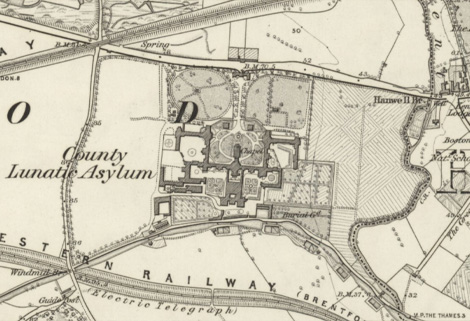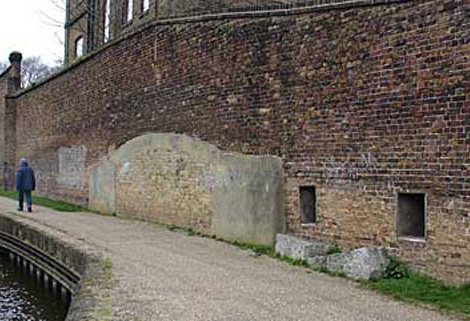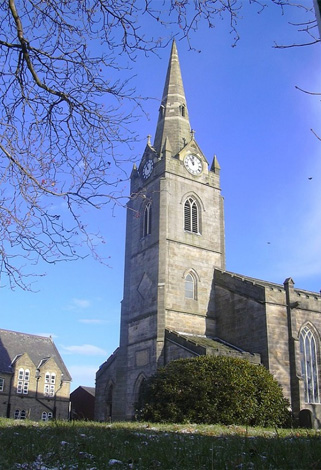living a new life 3
looking from the other side of the wall
is the past a foreign country?
In a past life, I was an occupational therapy service manager with an office base at St Bernard’s Hospital, on the Uxbridge Road, in West London. At the time it was the mental health wing of the local NHS Trust. It had once been Hanwell Pauper and Lunatic Asylum, renowned for initiating therapeutic employment and discontinuing the management of patients by mechanical restraint. 1
In the 1830s, the grounds of the asylum were farmed by the residents and the asylum was self-sufficient, with a laundry, bakery and brewery.
The Grand Union Canal runs behind the wall at the southern boundary of the site. It was not until I was on our boat going up the Hanwell flight that I noticed the bricked-up entrance to the asylum’s own docks, where barges delivered coal and took away surplus produce for sale. 2


There was an information board which made me realise, here was a completely different view and understanding of the St Bernard’s site. I really valued having new insight into where I had once had my office.
Time and time again, while journeying along the canal, you see buildings or relics from the past. You read personal accounts of how individuals and families lived and worked on or alongside the canals. Canals can give you a different view of life, past and current.
As we travelled further north last Autumn, we couldn’t help but notice the mills which dominate the skyline. Rock Nook textile mill, at Summit on the Rochdale Canal, was still standing when I took this photo. It struck me how church-like the tower is.
In Victorian times, the mill must have been as dominant and influential in the lives of local people as Holy Trinity Church, in nearby Littleborough. With dereliction, fire and now the demolition of the mill, this part of the local industrial history has gone.
The canals are a huge part of the nation’s history, but does that justify saving and maintaining old buildings, or creating museums and experiences to educate visitors? It’s a difficult question to consider when there doesn’t seem to be enough in the pot to maintain the current waterways.
I wonder if this links to my previous article which asked how to engage locals to care for and enjoy their local stretch of canal? Historic places promote the human stories of the people who built, lived, or worked in them.3
In learning these stories, people may see how the structure and culture of their communities have been shaped. If people can make a link with their local canal history, might they become invested in maintaining it today?
- St Bernard’s Hospital, Hanwell
Available at: https://en.wikipedia.org/wiki/St_Bernard%27s_Hospital,_Hanwell - Lost Hospitals of London - St Bernard’s Hospital
Available at: https://ezitis.myzen.co.uk/stbernards.html - Preservation Virginia website
Available at: https://preservationvirginia.org/why-preservation-what-are-the-benefits



